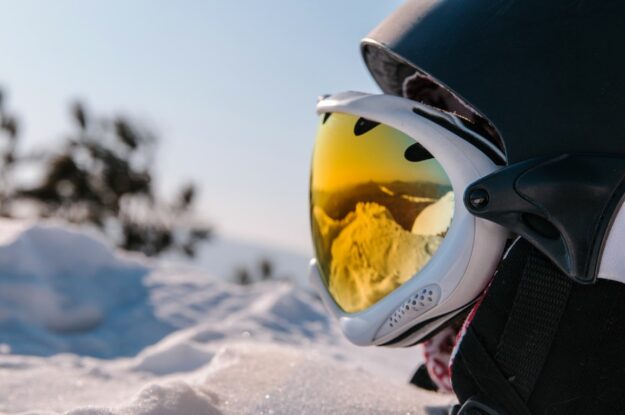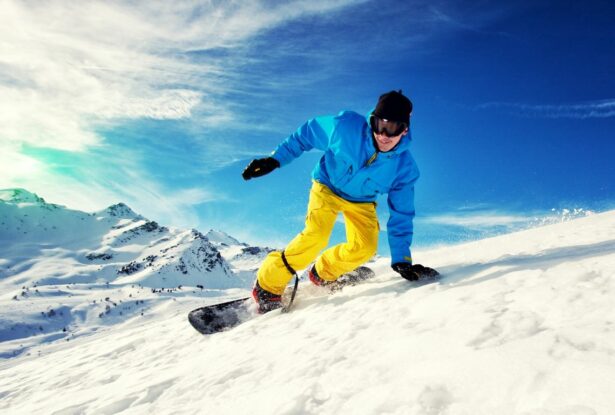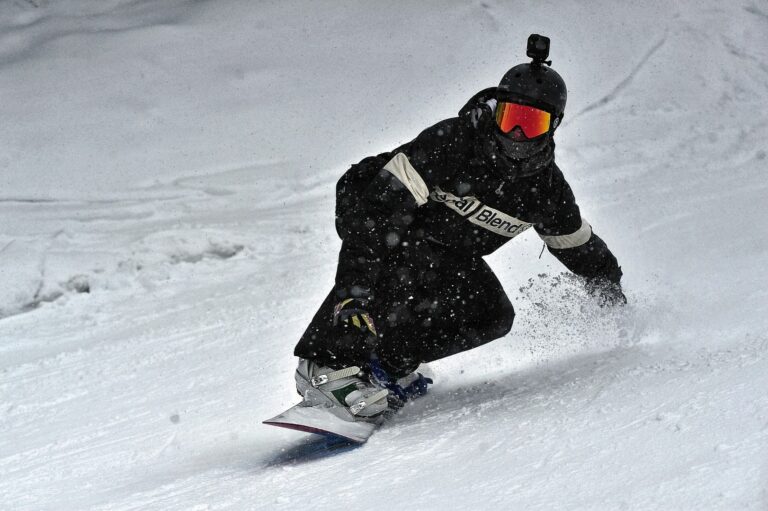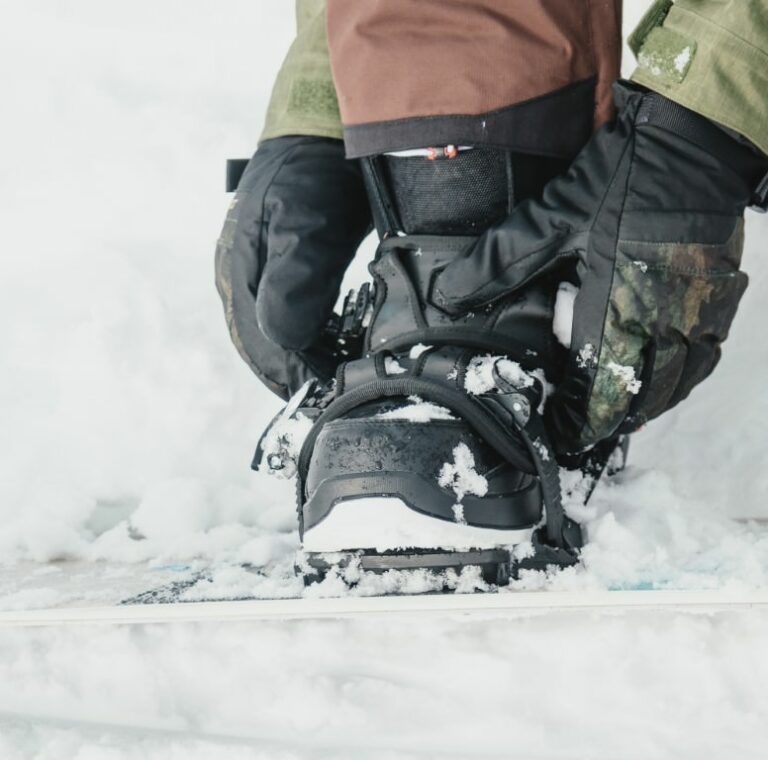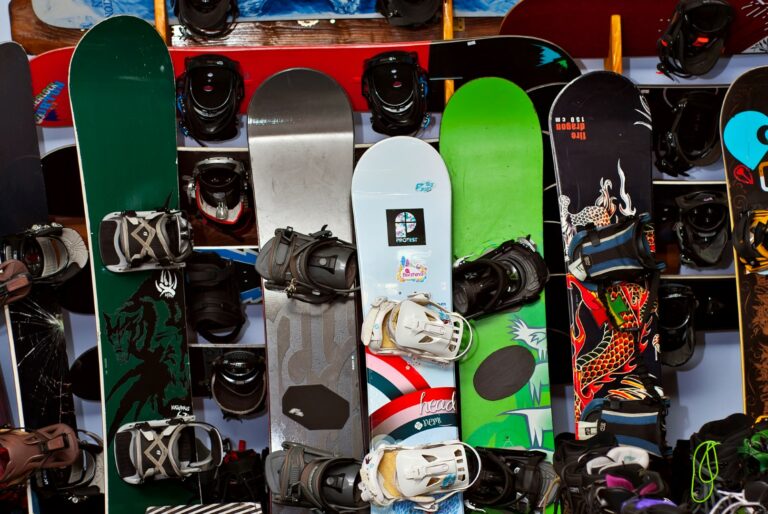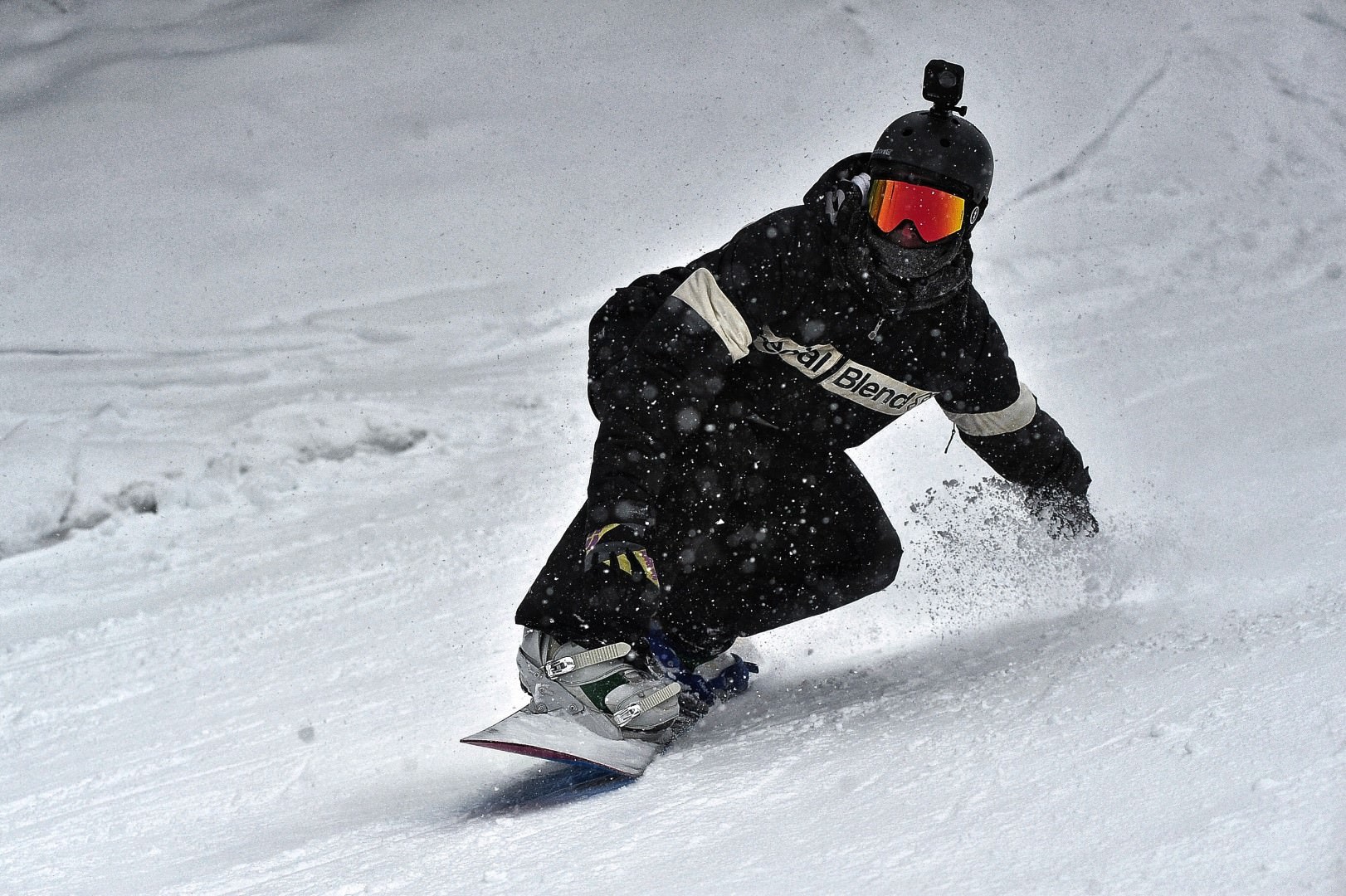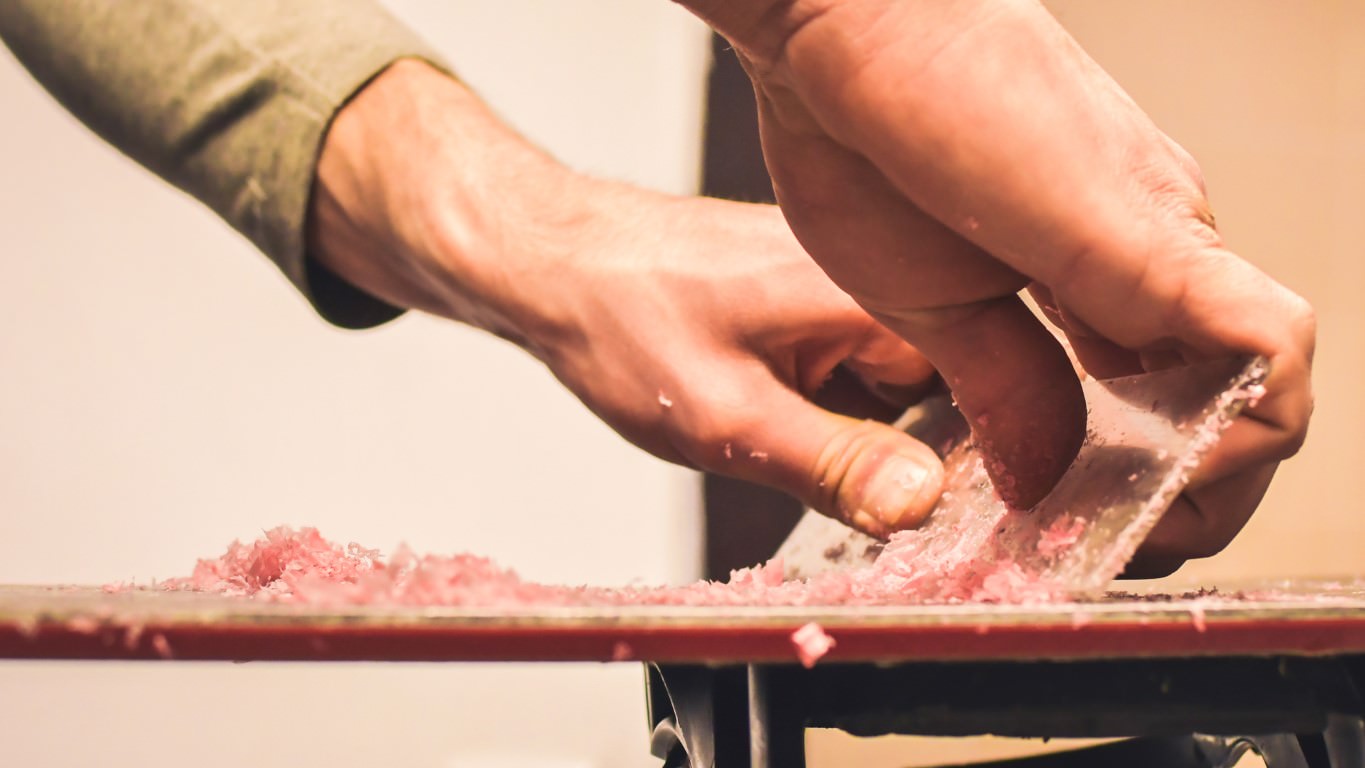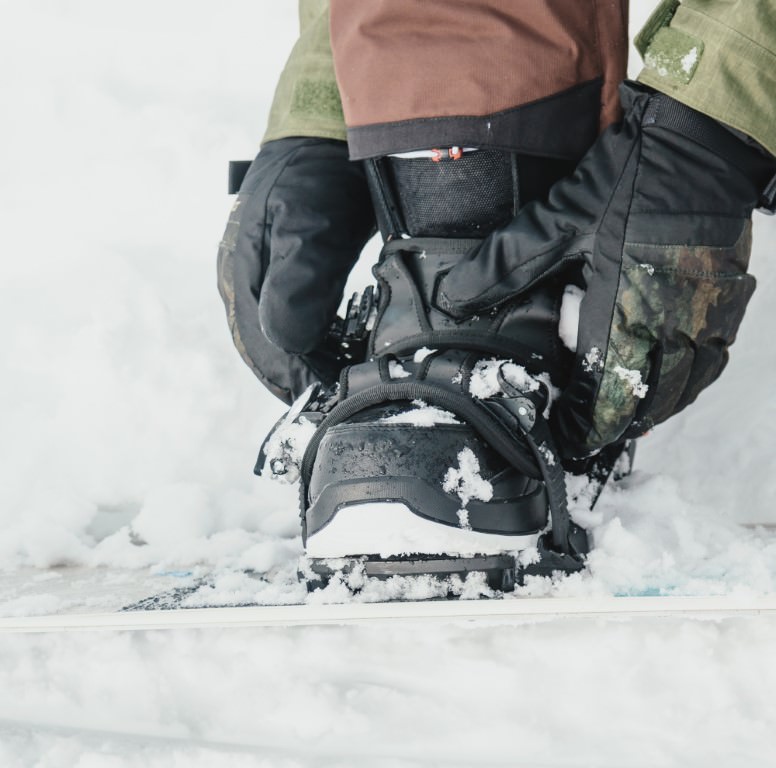Now, you’re faced with a thrilling dilemma: should you learn to ski or snowboard? Both sports present a unique blend of exhilaration and challenge, brimming with potential for fun and adventure. Although there are certain similarities between the two, the journey towards mastering each is a distinct path marked by different progressions and milestones.
Skiing Vs Snowboarding: What are the Main Differences?
The biggest difference between skiing and snowboarding is the body position on the slope. When skiing, you are facing down the hill and you move forward. With snowboarding, your body points sideways and you move down the hill similar to someone skateboarding or surfing.
Equipment is another big difference which does affect one’s ability to learn and progress in each sport. Snowboarders just have one piece of equipment to manage when riding while skiers have four. Skiing is also more expensive to get into, especially if you’re planning on buying new equipment.
Traditionally, skiing has more of a structured feel. Technical in nature, there is a lot of learning that goes into making the perfect turn or carve on varying terrain. Snowboarding on the other hand started because a surfer wanted to go surfing on the snow. Snowboarding has always had more of a creative outlook, especially with the progression of freestyle and freeride. Terrain Parks you see at most ski resorts today were actually developed for snowboarders. The first ever “Snowboard Park” was created in the 1989-1990 season. As ski technology changed, more and more skiers ventured into Snowboard Parks until they were dubbed Terrain Parks.
Skiing can be considered a lifelong sport if you keep your body in great shape and eat healthily. Because of the flexibility requirements and greater chance of falling on a snowboard, theoretically, it looks like it can be more difficult to continue this sport in your 80’s. Although not impossible, I’ve seen a lot more 80 year old skiers than snowboarders.
Which Sport is Easier for Complete Beginners
Skiing and snowboarding both look incredibly fun to a beginner and it can be hard to figure out what discipline to try first. In your quest to determine which snowsport you’d like to learn first, you ask yourself if one of the sports might be easier to learn. Although each sport has its own learning challenges, skiing is typically considered easier to learn.
With that said, skiing is easier for complete beginners as snowboarders fall a lot more. Bruised tailbones and wrist injuries are common injuries new snowboarders face when learning for the first time. As with anything in life, don’t shy away from a challenge just because something is more difficult. If one of the sports is of interest to you, go for it!
Is One Easier to Progress in Compared to the Other?
The consensus in the snowsports community is as follows. Skiing is easier to learn yet harder to master, and snowboarding is harder to learn yet easier to master.
The reason for skiing being easier to learn is because of the normal body position and ability to stand effortlessly on skis without having to balance on a single edge like on a snowboard. Standing on skis is much more intuitive to standing on a snowboard when on flat terrain.
Snowboarding also limits your peripheral vision as you can only see about 50% of what’s in front of you. This can be a major obstacle to overcome due to its unnatural feeling. Once a snowboarder is able to link turns though, they are able to progress to steeper terrain much quicker. The mechanics for a turn on a green run vs a black run are identical and the faster you’re moving actually aids in sharper turns. Although each sport has more technical requirements on advanced terrain, snowboarding will be much easier to conquer.
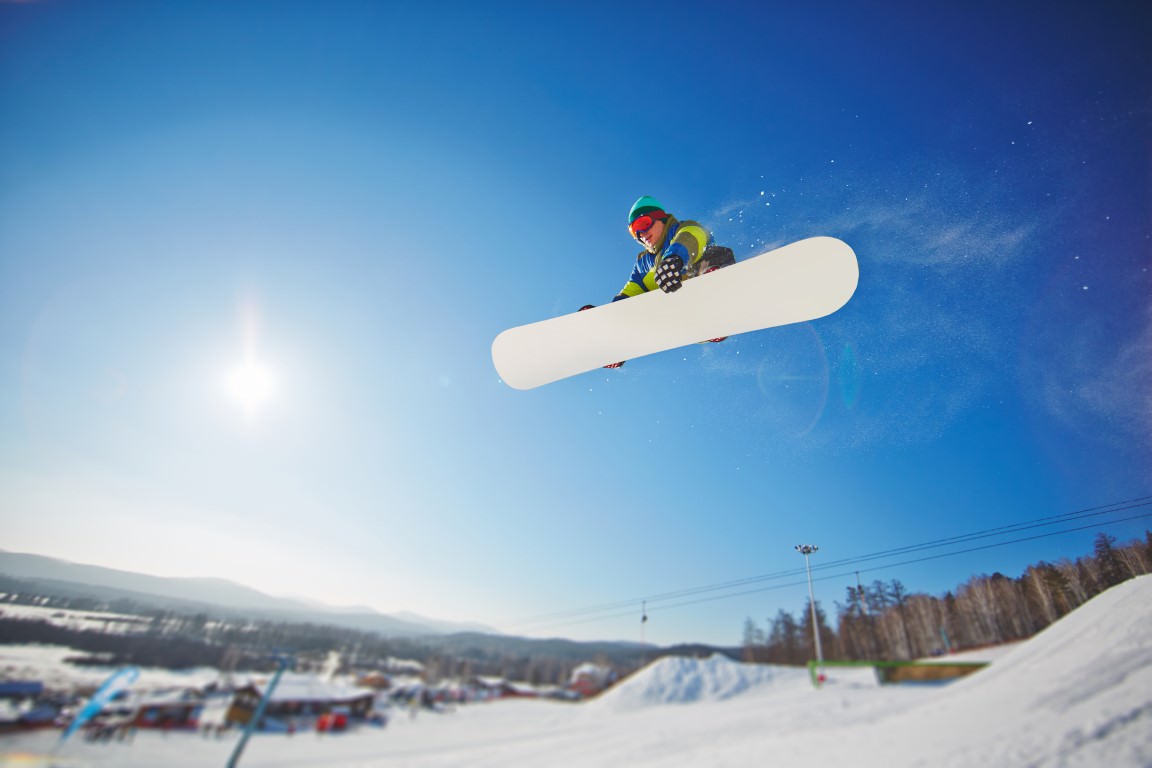
How Do Skiing and Snowboarding Lessons Differ in Terms of Teaching Methods and Structure?
When taking lessons for either sport, coaching will be structured in a way that promotes balance on equipment, movement and progression of skills while developing confidence and ensuring a fun experience. Instruction in either sport will be broken into theory, demonstration and mileage.
Each sport starts out by learning how to move with the equipment on your feet on flat ground. Lessons then progress to balance while sliding and then advance into developing beginner turns. Ski lessons will provide an opportunity to progress to beginner turns faster than snowboarders due to its more intuitive nature.
Snowboarders need to learn and develop balance on each edge successfully before introducing turns. This can be the trickiest part to learn, especially on the toe edge which is not intuitive at all. This can take time to develop. As snowboarders are strapped to their board, they have no ability to stay upright when they lose their balance and will end up on the ground.
Although basic turns on skis are easier than beginner snowboard turns, this is where the two sports diverge in terms of difficulty. Once snowboarders grasp beginner turns, learning becomes fast, as you just need to copy the same movements down steeper slopes and get mileage.
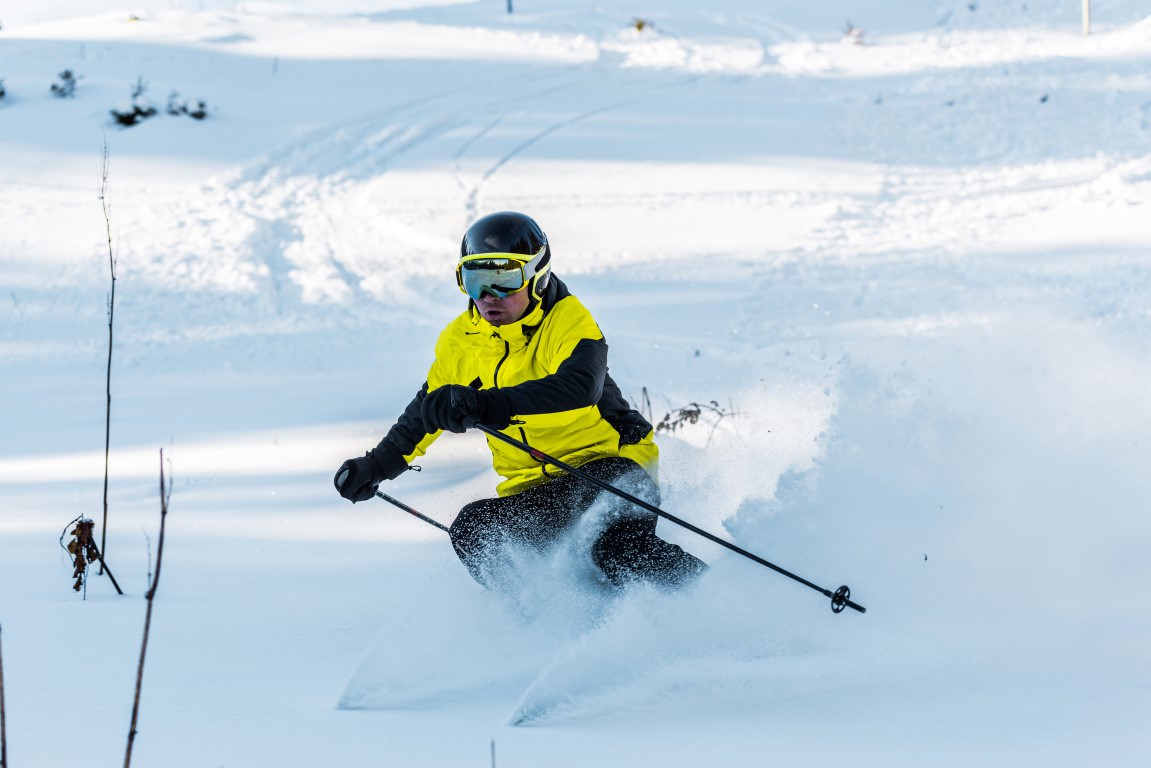
Skiers now have to become comfortable with managing two skis and moving them in-sync while learning sliding turns. This can take a considerable amount of time to accomplish, and you must do all this while keeping your eyes on the slope. Then instructors will incorporate poles into the mix which will eventually help with your timing and coordination after you get used to them.
Introducing poles can be another very tricky step because it’s an additional movement you have to manage. Oddly enough, your ski performance may slightly worsen at this step as you now have to multitask upper and lower body movements in a specific rhythm.
With either sport, instructors should be able to present material, analyze performance and adjust lesson plans depending on learning competency. Everyone learns at a different pace, and as such, people progress at different speeds.
Is It Common for People to Switch Between Skiing and Snowboarding as They Progress?
If your goal is to learn skiing and snowboarding, it’s advisable to stick to one until you’re comfortable with it. By learning one sport at a time, you begin to develop balance on snow, edge awareness and learn through uninterrupted repetition. Switching sports as you’re learning will hinder your learning.
Once you can ride with blue runs confidently, you can consider trying the other sport. By this time, you will already be comfortable on snow, and the entire experience will be more familiar to you compared to the first time you ventured out on snow. You should also pick up the second sport quicker than a beginner because of the time you’ve already spent on snow plus the added confidence in this setting.
Are There Certain Body Types or Fitness Levels That May Find Skiing or Snowboarding Easier?
It should be no surprise that learning either sport requires some basic level of fitness. For each sport, you should be comfortable squatting, jumping, balancing on one leg and have good flexibility. Both sports are also aerobic in nature so you should have some level of cardiovascular endurance. Surprisingly, both sports use muscles differently.
Skiing
People with strong legs and thighs will find skiing suitable for them as it targets the majority of your leg muscles with an emphasis on quads and thighs. It is a total body workout though
Snowboarding
This sport is suitable for people with flexibility, lower body strength and core stability. Snowboarding is very core dominant because of the higher balance requirements of the sport. As with skiing, the entire body will get a workout.
Can Previous Experience in Other Sports Make Skiing or Snowboarding Easier to Learn?
Absolutely! If you have experience in ice skating, rollerblading or nordic skiing, you will pick up downhill skiing much faster as you will have developed an understanding of independent leg movement. If you have done any board sports like surfing, skateboarding, wakeboarding etc. you will find many of the movements similar.
Can I Learn Skiing and Snowboarding Simultaneously, or Should I Focus On One at a Time?
It is advisable to stick to one sport until you are fairly comfortable with it. Given that learning either sport requires repetition and mileage, it’s best to focus on one.
Are There Any Exercises or Stretches That Can Improve My Learning Experience?
Both sports command strong legs, balance, power and cardiovascular endurance. You can follow great ski exercise programs and excellent snowboard training programs to improve this aspect of your riding.
After your day on the slopes, you want to focus on stretching out your legs, hips and back. Post ski stretches and post snowboard stretches are incredibly important.
Conclusion
The hardest decision you will face when entering the snowsports industry is which sport to start out with. Each discipline will have its positives and negatives while learning. There is really no right answer for which one to choose. Try one of them and if you don’t like it, switch. If you’re unsure, rent your gear and try both!
Skiing and snowboarding are both amazing activities that get you physically active, improve your mental health and provide a great opportunity for socializing and making lifelong friends. These sports open you up to a world of adventure, opportunity and personal growth that is unmatched by most traditional sports.

